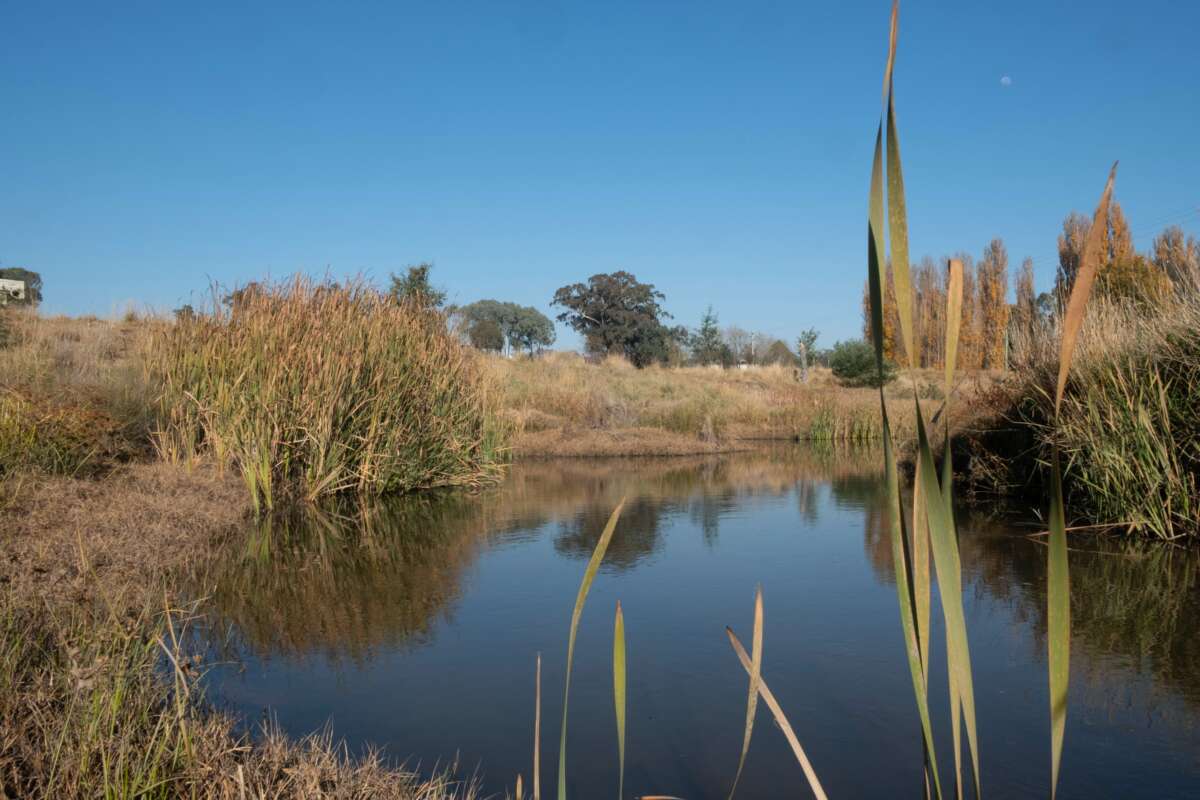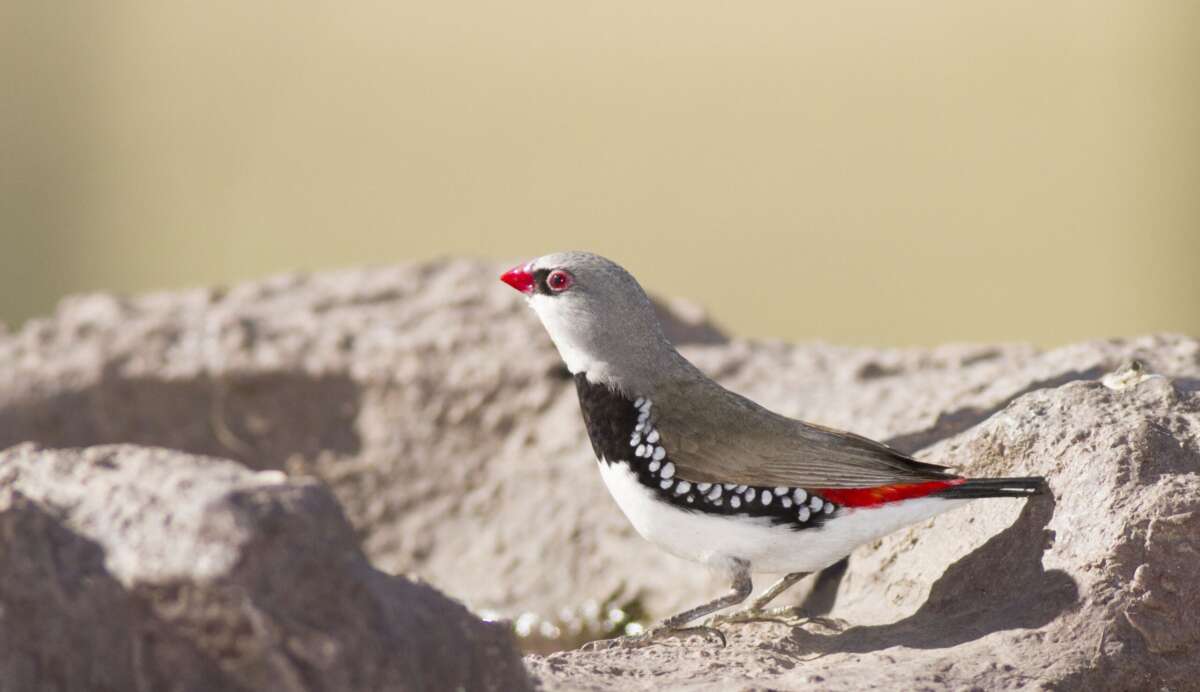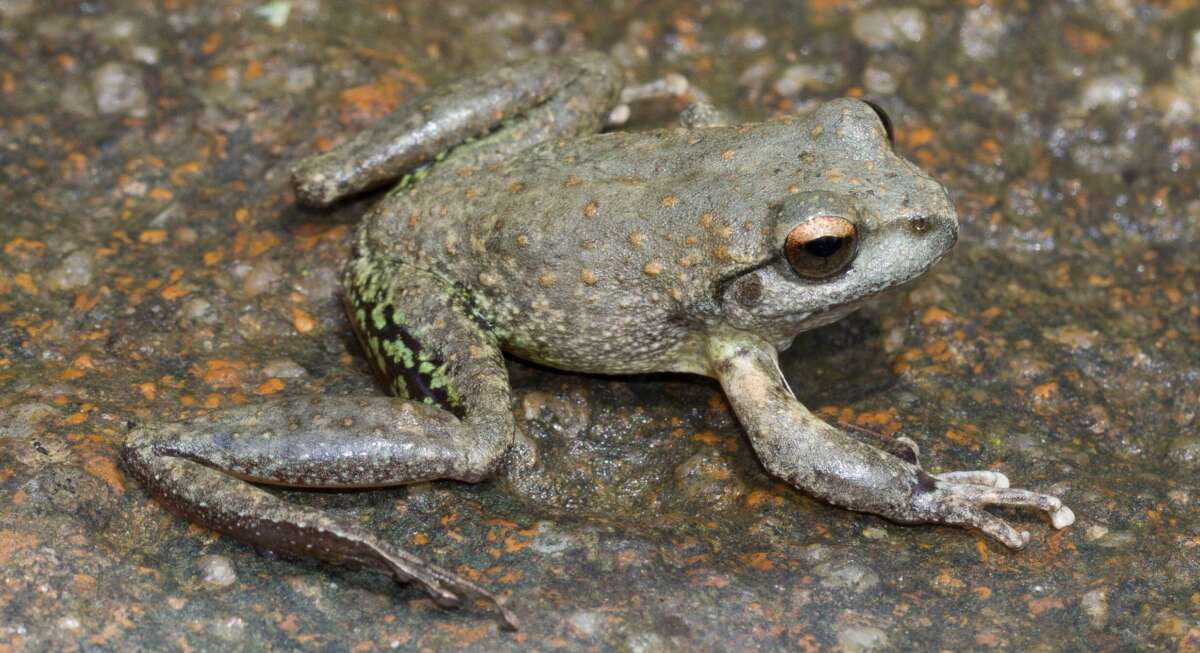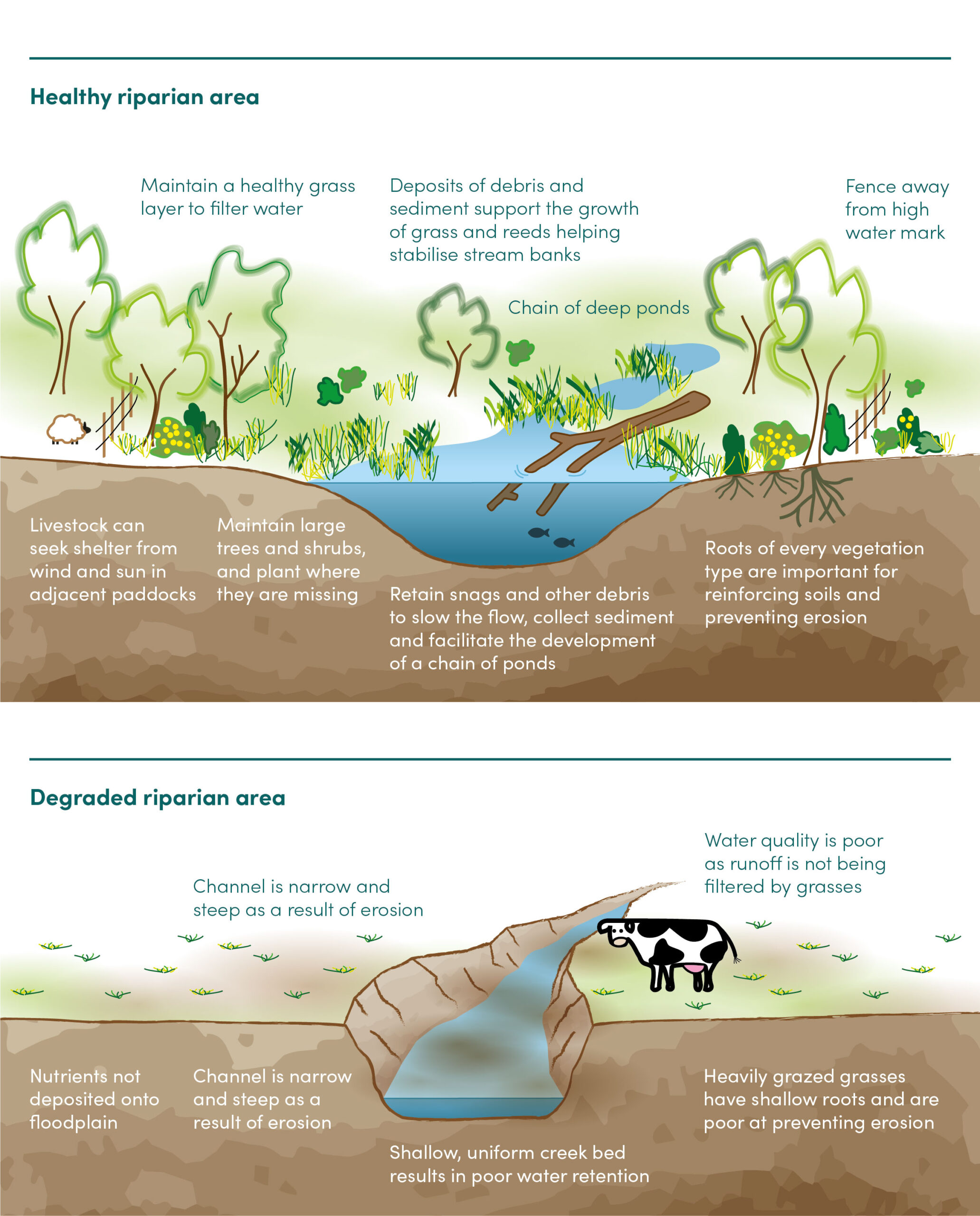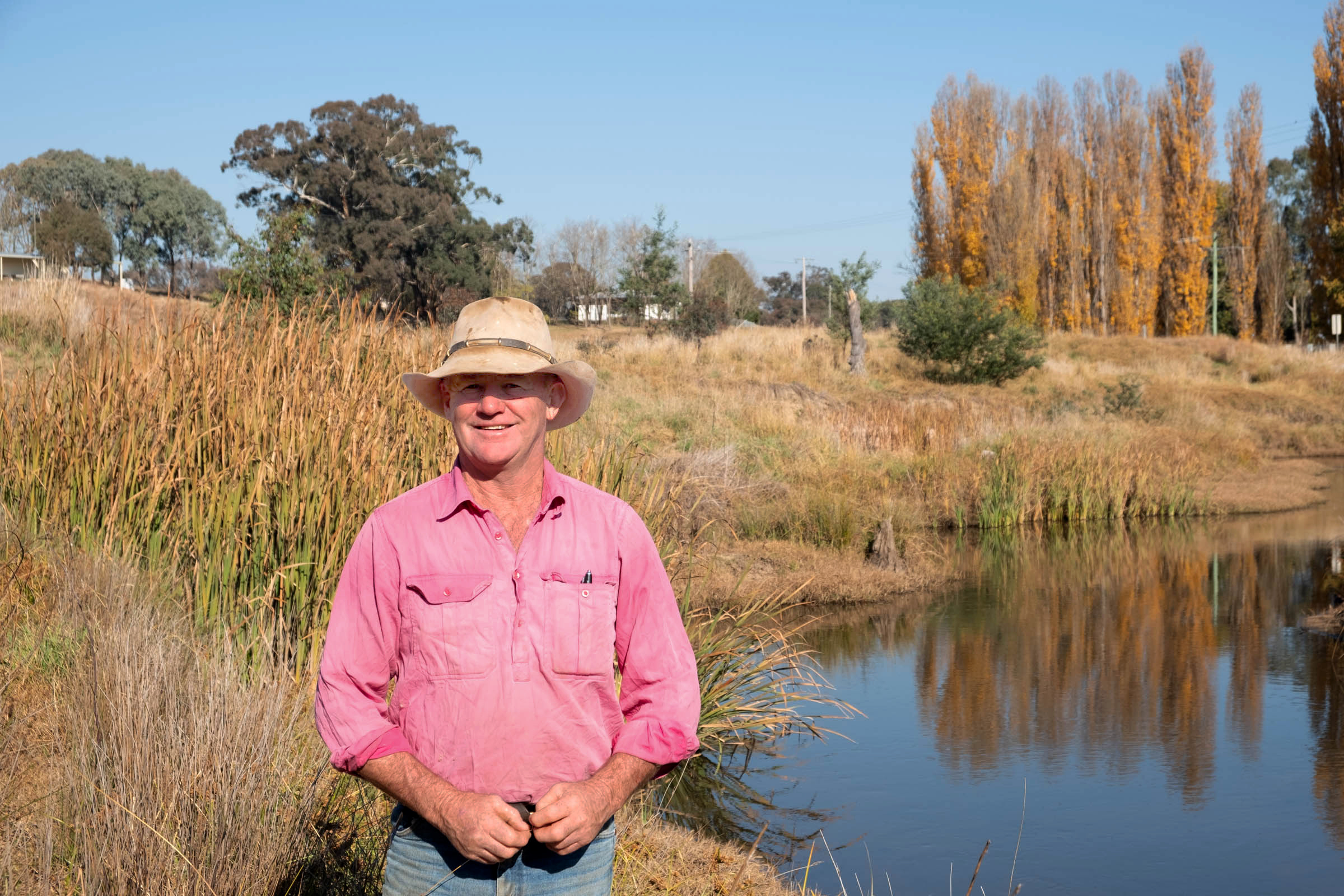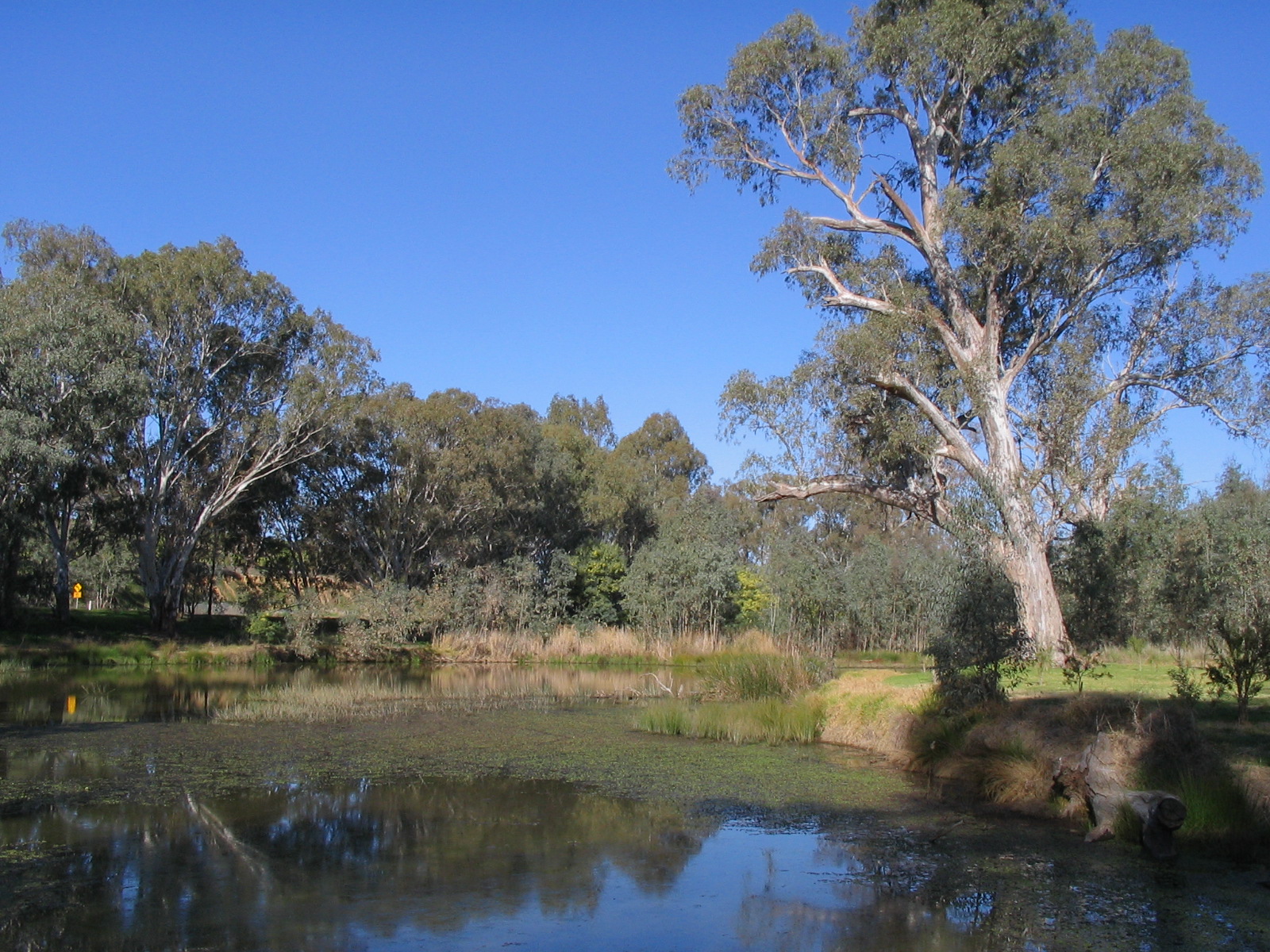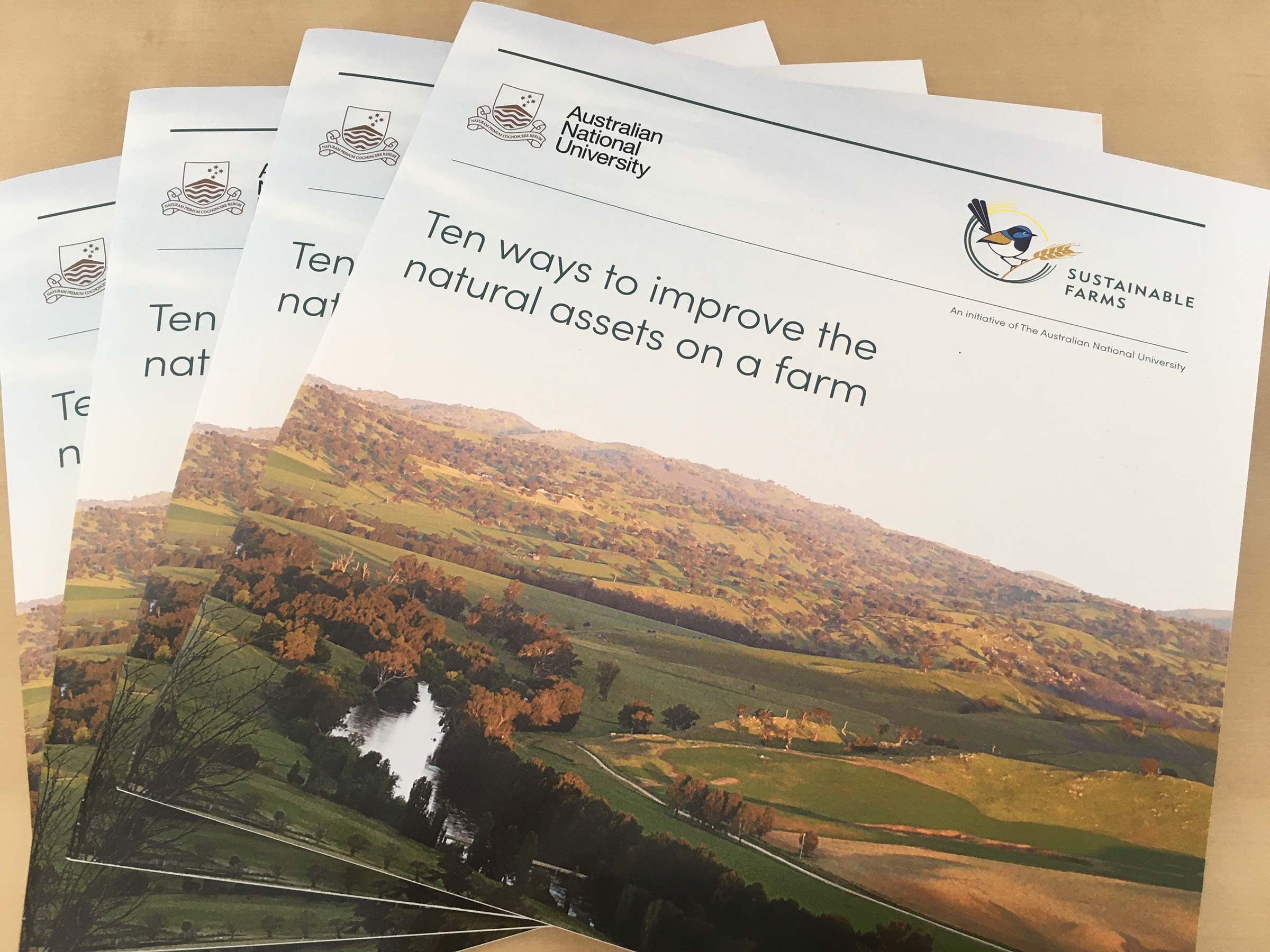The most important step in restoring riparian areas is fencing to exclude or strictly control stock access. Given that squirrel gliders and other species, such as bats, occupy these areas, it is important that wildlife friendly fencing is used to avoid their entanglement.
The arrangement of fences will depend on the grazing history of the property and the goals of the land manager. The best practice for riparian restoration is to install fences to permanently exclude or limit stock grazing. It is important to ensure that these fences are installed above the high water mark to prevent damage during flood events, and well back from active erosion zones (generally the outside of bends).
Sedimentation can impact on biodiversity in a number of detrimental ways and should be controlled as much as possible. Waterways with cobblestones are biodiversity hotspots that attract invertebrates. Many species, such as the threatened Booroolong Frog, lay their eggs in between cobblestones. Sediment free cobblestones and other rock features are also important habitat for the Macquarie Perch. When allowed access to these areas, stock can quickly stir up enough sediment to fill the gaps between cobblestones and thus eliminate habitat.
Where it is not feasible to exclude grazing, fences can be installed beyond the immediate riparian area to create a riparian pasture, which can be carefully grazed as a part of a rotational grazing system. Temporarily resting riparian areas from grazing until there is sufficient recovery to recommence grazing according to sustainable management principles and practices can make a substantial difference in the function of these areas.
If none of these options are immediately possible, providing alternative shelter and water away from riparian areas, as well as moving any supplemental resources such as feed, salt and mineral stations away from sensitive riparian areas can encourage stock to spend less time there and may provide some benefit.
